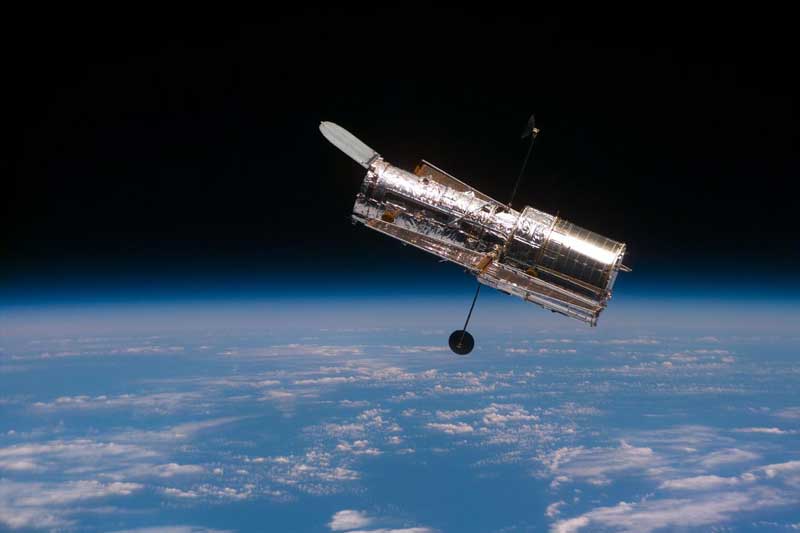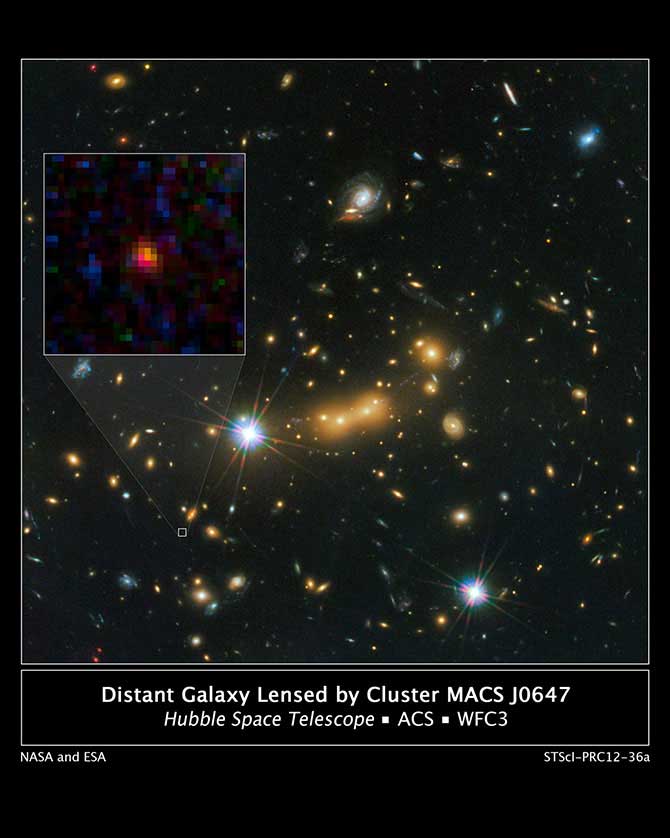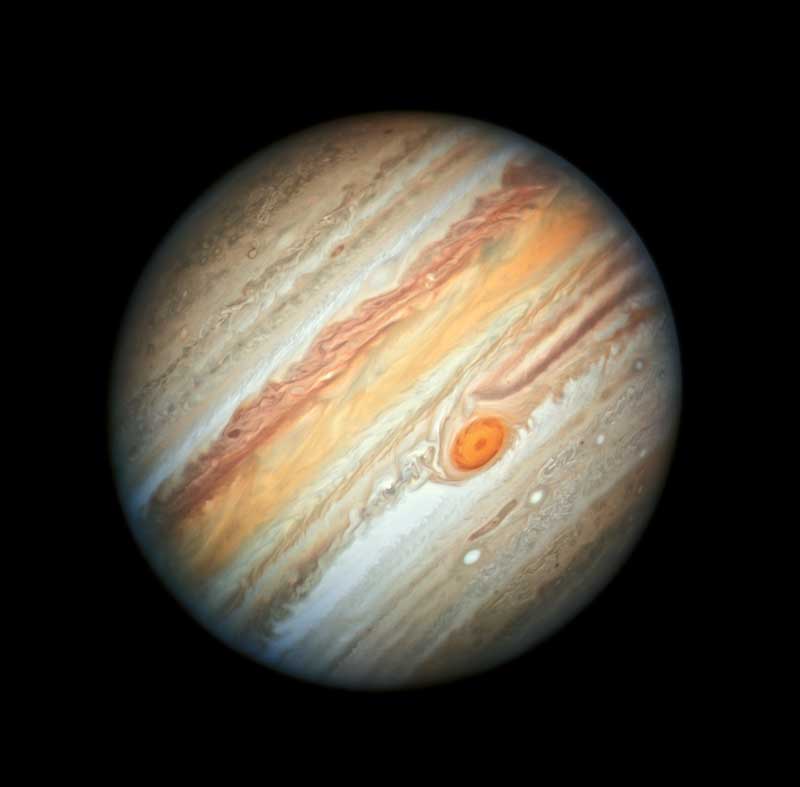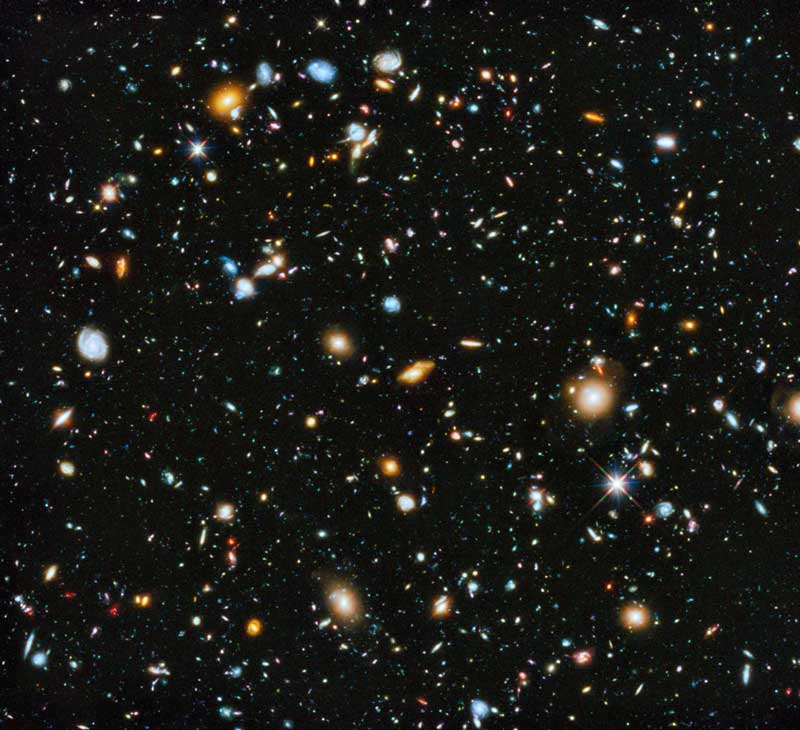30 Facts for 30 Years of Hubble
Published: April 24 2020 Updated: February 20 2025

NASA’s Hubble Space Telescope has been looking out into the universe for 30 years! In honor of this milestone anniversary, here are 30 facts about Hubble and its discoveries. Be sure to check out the related links for more photos and resources to expand your understanding.
-
- The NASA Hubble Space Telescope was named after astronomer Edwin Hubble who studied distant galaxies.
- Hubble’s history dates back to the 1940s! In 1946, Lyman Spitzer wrote a paper about the advantages of studying astronomy from space and he presented the idea of a “Large Space Telescope.” The first group began work on this Large Space Telescope in 1974. Learn more about Hubble’s timeline.
- Hubble launched aboard space shuttle Discovery on STS-31 from Kennedy Space Center, Florida. It launched on April 24, 1990 and was deployed one day later, April 25.
- Hubble is a joint international project between NASA and the European Space Agency.
- Our atmosphere blocks some wavelengths and blurs Earth telescope’s images. That is why Hubble is in orbit beyond our atmosphere– to get a clearer picture than what Earth telescopes can capture.
- Hubble detects visible, near-infrared and ultraviolet light.
- Hubble has to be very accurate. It must focus without moving 7/1000th of an arcsecond. That equates to about the width of a human hair seen from 1 mile away!
- Hubble is one of NASA’s four Great Observatories. The other three are/were the Compton Gamma Ray Observatory, the Chandra X-ray Observatory and the Spitzer Space Telescope.

-
- Hubble travels at a speed of 17,500 miles/27,300 kilometers per hour as it orbits Earth. It takes approximately 95 minutes to complete one trip around Earth.
- Hubble orbits Earth about 340 miles/547 kilometers above its surface.
- Hubble has orbited Earth over 175,200 times in its 30 years of operation.
- The sun powers Hubble through solar cells on each winged array. Some of that power is reserved for when Hubble is in Earth’s shadow in orbit.
- There have been five missions to upgrade the Hubble Space Telescope after its launch. The final service mission was during space shuttle Atlantis STS-125.
- The closest object observed by Hubble is the Moon.
- The farthest star Hubble has observed is called Icarus and it is about 5 BLLION light-years away. A light-year describes distance for space objects, referring to the distance light travels in one year. One light-year is about 6 trillion miles, or 9 trillion kilometers!
- Farthest galaxy Hubble as observed is 13.3 BILLION light-years away: the galaxy MACS0647-JD (below).

-
- Thanks to Hubble and the European Space Agency’s Gaia space observatory, it has been calculated that the universe is approximately 13.8 BILLION years old.
- We have learned that black holes are at the center of almost every major galaxy from observations from Hubble. Learn more about this discovery.
- Hubble cannot take images of Earth as it is orbiting too fast for the camera’s exposure time.
- Hubble takes grayscale images. The colors seen in Hubble images show chemical elements and other features not seen by the human eye. Learn more about how Hubble images use color.
- It did not take long for Hubble to send back groundbreaking images. In 1991, Hubble released its first true-color image of Jupiter.
- In 2006, Hubble discovered a “tenth planet” beyond Pluto named Xena. This sparked the reclassification of Pluto as a dwarf planet.
- Hubble can help determine the atmosphere and makeup of exoplanets, which are planets outside our own solar system. This can help address whether distant planets may be able to support life. Explore Hubble’s work with exoplanets.
- Hubble has captured examples of the three different types of galaxies elliptical, spiral and irregular.
- Hubble is still operational! Its most recent images of Jupiter were taken in 2019 (below).

- Dark energy, a force that causes the expansion of our universe to accelerate, was discovered with the help of Hubble.
- Any astronomer around the world can request time on the Hubble Space Telescope. There have been about 20,000 individual observations since the telescope’s beginning.
- You can zoom in on some of Hubble’s most iconic images. Get an up-close look of your favorites here on high resolution images.
- You can see where Hubble is looking at any given time with Space Telescope Live.
- Hubble has made more than 1.4 million observations. Which one is your favorite?

LEARN MORE:
Hubble Site
NASA’s Hubble Space Telescope
Educational Lithographs